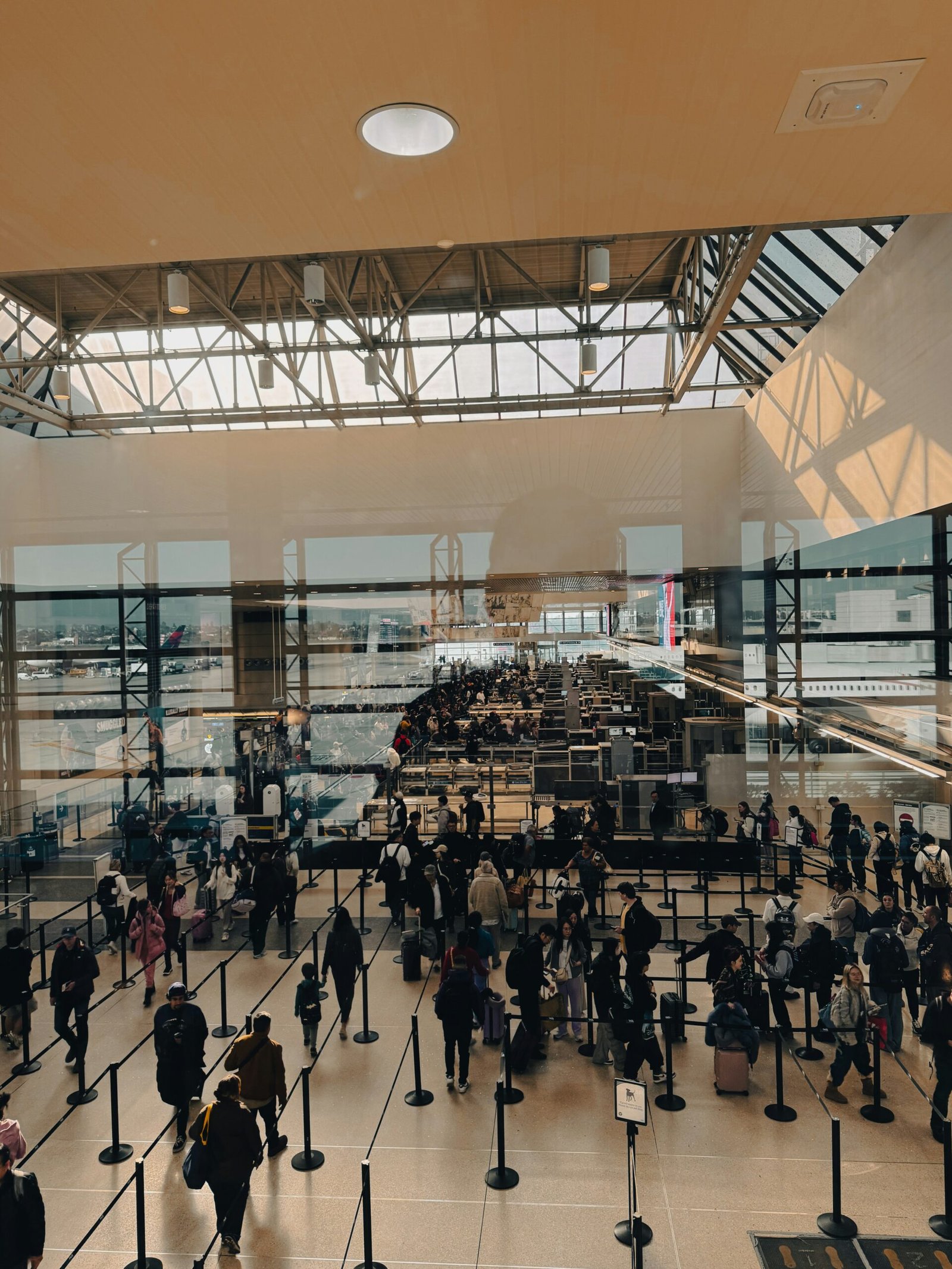Politics
Why One in Four Americans Dislike Both Biden and Trump
As the 2024 presidential election approaches, a significant portion of the American electorate finds itself in a state of disillusionment. About one in four Americans, or 26%, hold unfavorable views of both President Joe Biden and former President Donald Trump. This sentiment is particularly pronounced among younger adults and those who identify as independents or lean towards a party without strong partisan ties. Understanding the reasons behind this widespread dissatisfaction offers valuable insights into the current political landscape and the challenges facing both major parties.
Generational Discontent
Younger voters, in particular, express a high level of discontent with both Biden and Trump. Approximately 41% of adults aged 18 to 29 have unfavorable opinions of both candidates, compared to 30% of adults aged 30 to 49 and less than 20% of those aged 50 and older. This generational divide highlights a growing disconnect between younger voters and the older political figures who dominate the current landscape.
For many young adults, issues such as climate change, reproductive rights, student loan debt, and racial justice are paramount. They feel that neither Biden nor Trump adequately addresses these concerns. For instance, some young liberals are frustrated with Biden’s perceived lack of action on student loan forgiveness and climate policy, while others are disenchanted with Trump’s stances on immigration and LGBTQ+ rights.
The Independent Perspective
Those who reject strong partisan labels are also more likely to hold unfavorable views of both Biden and Trump. About 35% of Republican-leaning independents and 38% of Democratic-leaning independents have negative views of both candidates. In contrast, only 15% of Republican identifiers and 19% of Democratic identifiers share this sentiment.
This disillusionment among independents and leaners reflects a broader frustration with the binary nature of American politics. Many feel trapped in a system that forces them to choose between two candidates they find unappealing, leading to a sense of political fatigue and a desire for new leadership.
Age and Fitness for Office
A significant concern for many Americans, regardless of age, is the perception that both Biden and Trump are too old to serve another term as president. This belief is shared across party lines, with 59% of Americans expressing this concern. The age issue adds to the perception that neither candidate is fit to lead the country into the future, further fueling dissatisfaction.
Economic Concerns
Economic issues, such as the cost of living, housing affordability, and job security, are major concerns for younger voters. Despite signs of economic recovery, many young adults feel that their economic realities are not improving as quickly as they would like. This dissatisfaction is often directed at the current administration, regardless of the broader economic context.
Political Fatigue
Many young voters are tired of seeing the same political figures dominate elections. They desire fresh perspectives and new leadership, which neither Biden nor Trump represents. This fatigue is reflected in the high percentage of young voters who express unfavorable views towards both candidates.
Distrust in Political Promises
Younger voters are also skeptical about the ability of both Biden and Trump to follow through on their campaign promises. Past experiences where political promises have not been met contribute to a general distrust in both candidates’ ability to bring about meaningful change.
The widespread dissatisfaction with both Joe Biden and Donald Trump among younger adults and independents highlights a significant challenge for the American political system. As the 2024 election approaches, both major parties must address the concerns of a disillusioned electorate that is increasingly demanding new leadership and fresh perspectives. Understanding and addressing the root causes of this discontent will be crucial for any candidate hoping to win over this critical segment of the population.
Politics
Divided and Deadly: When Political Hatred Turns Fatal

America’s political divide is no longer just a metaphor—it’s now a measurable, chilling reality. In recent weeks, a relentless barrage of violence has brought headline after headline: the assassination of Charlie Kirk on September 10th, bomb threats and failed attempts targeting news crews, shootings at public gatherings, attacks on federal agents, and online mobs openly glorifying the carnage. What once seemed fringe or exceptional is now undeniably mainstream. The unthinkable is becoming all too routine.
Consider this: within days of Kirk’s assassination, a Fox News van parked at the crime scene in Utah was targeted by a bomb that narrowly failed to detonate, followed by bomb threats at the home of presidential candidate RFK Jr. Shootings tied to political slogans erupted at a New Hampshire country club and inside a news station, with attackers leaving manifestos and warning that “Trump officials would be next.” Meanwhile, federal ICE agents were ambushed in Chicago by carloads of heavily armed assailants—another event spun by legacy media as if it was government aggression, rather than a defensive response to an act of terror.

This surge in violence is not happening in a vacuum. It emanates from decades of tolerated, even celebrated, dehumanization across the political spectrum. But, in Brett Cooper’s telling—and in the disturbing texts and rhetoric unearthed in the wake of these tragedies—the epicenter appears to be one party’s willingness to excuse, justify, or even cheer political assassination. Cooper highlights not just one-off outbursts, but prominent Democratic politicians openly wishing death and horror on their opponents, their families, and even their children. The infamous leaked texts from Virginia’s Jay Jones—expressing desire to see innocent children die “so that their father would change his opinions”—read like a dystopian novel come to life. Yet, defenders line up, brushing it off as “mistakes” and framing any criticism as partisan smears.
How did this become the new normal? The left, argues Cooper, has marinated in a protest culture that sanctifies violence as a substitute for persuasion. Losing an election, a court case, or a policy fight now justifies open calls for revenge. Online, the rhetoric is as gruesome as the reality, with political adversaries not simply derided, but declared subhuman and unworthy of life—a chilling echo of history’s darkest chapters.
Of course, political violence can never be blamed on rhetoric or ideology alone. But words have consequences. Leaders who flirt with calls for violence set the tone for every zealot and unstable mind. The celebration of real-world killings by online mobs only entrenches a cycle where each incident of bloodshed is either weaponized or excused, not universally condemned.
Perhaps most dangerous is the media’s shifting lens—the effort to muddy attacks with claims of ambiguity about motive or to frame self-defense by government officers as wanton aggression. The danger isn’t just physical, but moral and cultural: when outrage at assassination gives way to tribal excuses, a nation chips away at its own foundation.
In a world this divided and deadly, Cooper’s advice feels both practical and poignant: focus on the real, the local, the communal. Sit down with family. Turn down the temperature wherever possible. Call out inhumanity—no matter who it comes from.
America’s most urgent debate is not just about policy, but about whether political disagreement must now also mean existential threat. If ever there was a time for collective soul-searching, it is now—when headlines show, beyond a shadow of a doubt, that political hatred can, and does, turn fatal.
News
How a Government Shutdown Could Hit Your Life and Wallet

What a Shutdown Means for You
When Washington can’t agree on funding, government operations grind to a halt—and millions feel the ripple effects. Whether employed by a federal agency, planning a trip, or just waiting for a tax refund, the shutdown’s reach can extend into daily life in unexpected ways.

Paychecks and Local Economies
Federal employees are on the frontline, facing furloughs or delayed pay. If you or someone in your household works for the government, this means missed or postponed earnings—sometimes for weeks. Local businesses feel the squeeze when those employees cut back on spending, and contractors dependent on federal clients might also see sudden layoffs and lost projects.
Services and Everyday Disruption
From longer airport lines to shuttered national parks, public services can stall or close entirely. Waiting on a passport renewal, Social Security verification, or a student loan application? Those processes may be paused, causing headaches and delays that interrupt travel plans, business operations, or educational goals.
Health Care Worries
Shutdowns often spark fierce debates over health care policy. If negotiations stall, federal insurance tax credits could vanish, causing health premiums to spike for millions. For some, especially those relying on government-supported coverage, this means losing insurance altogether—a risk that could affect up to four million Americans if deadlock persists.
Impact on the Economy and Markets
Travel slows as essential agencies are stretched thin and parks close, costing the travel industry as much as $1 billion each week the shutdown lasts. Economic data releases used by the Federal Reserve and investors can also be delayed, muddying the outlook for businesses and individuals watching inflation or employment figures.
The Real-Life Cost
A government shutdown isn’t just a political fight—it’s an event that can upend plans, impact paychecks, delay vital services, and create stress for families nationwide. History shows most communities bounce back, but for those caught in the crossfire, the effects are personal and immediate.
Politics
Netanyahu’s UN Speech Triggers Diplomatic Walkouts and Mass Protests

What Happened at the United Nations
On Friday, Israeli Prime Minister Benjamin Netanyahu addressed the United Nations General Assembly in New York City, defending Israel’s ongoing military operations in Gaza. As he spoke, more than 100 delegates from over 50 countries stood up and left the chamber—a rare and significant diplomatic walkout. Outside the UN, thousands of protesters gathered to voice opposition to Netanyahu’s policies and call for accountability, including some who labeled him a war criminal. The protest included activists from Palestinian and Jewish groups, along with international allies.

Why Did Delegates and Protesters Walk Out?
The walkouts and protests were a response to Israel’s continued offensive in Gaza, which has resulted in widespread destruction and a significant humanitarian crisis. Many countries and individuals have accused Israel of excessive use of force, and some international prosecutors have suggested Netanyahu should face investigation by the International Criminal Court for war crimes, including claims that starvation was used as a weapon against civilians. At the same time, a record number of nations—over 150—recently recognized the State of Palestine, leaving the United States as the only permanent UN Security Council member not to join them.
International Reaction and Significance
The diplomatic walkouts and street protests demonstrate increasing global concern over the situation in Gaza and growing support for Palestinian statehood. Several world leaders, including Colombia’s President Gustavo Petro, showed visible solidarity with protesters. Petro called for international intervention and, controversially, for US troops not to follow orders he viewed as supporting ongoing conflict. The US later revoked Petro’s visa over his role in the protests, which he argued was evidence of a declining respect for international law.

Why Is This News Important?
The Gaza conflict is one of the world’s most contentious and closely-watched issues. It has drawn strong feelings and differing opinions from governments, activists, and ordinary people worldwide. The United Nations, as an international organization focused on peace and human rights, is a key arena for these debates. The events surrounding Netanyahu’s speech show that many nations and voices are urging new action—from recognition of Palestinian rights to calls for sanctions against Israel—while discussion and disagreement over the best path forward continue.
This episode at the UN highlights how international diplomacy, public protests, and official policy are all intersecting in real time as the search for solutions to the Israeli-Palestinian conflict remains urgent and unresolved.

 Business4 weeks ago
Business4 weeks agoDisney Loses $3.87 Billion as Subscription Cancellations Surge After Kimmel Suspension

 Entertainment4 weeks ago
Entertainment4 weeks agoWhat the Deletion Frenzy Reveals in the David and Celeste Tragedy

 Entertainment4 weeks ago
Entertainment4 weeks agoExecutive Producer Debut: How Celia Carver Created Festival Hit ‘Afterparty’

 Health4 weeks ago
Health4 weeks agoRussia Claims 100% Success With New mRNA Cancer Vaccine

 Business3 weeks ago
Business3 weeks agoWhy Are Influencers Getting $7K to Post About Israel?

 Health4 weeks ago
Health4 weeks agoWhy Did Gen Z QUIT Drinking Alcohol?

 Advice4 weeks ago
Advice4 weeks agoHow AI Is Forcing Everyone Into the Entrepreneur Game

 Entertainment3 weeks ago
Entertainment3 weeks agoKeith Urban and Nicole Kidman Split After 20 Years as Actress Files for Divorce





































